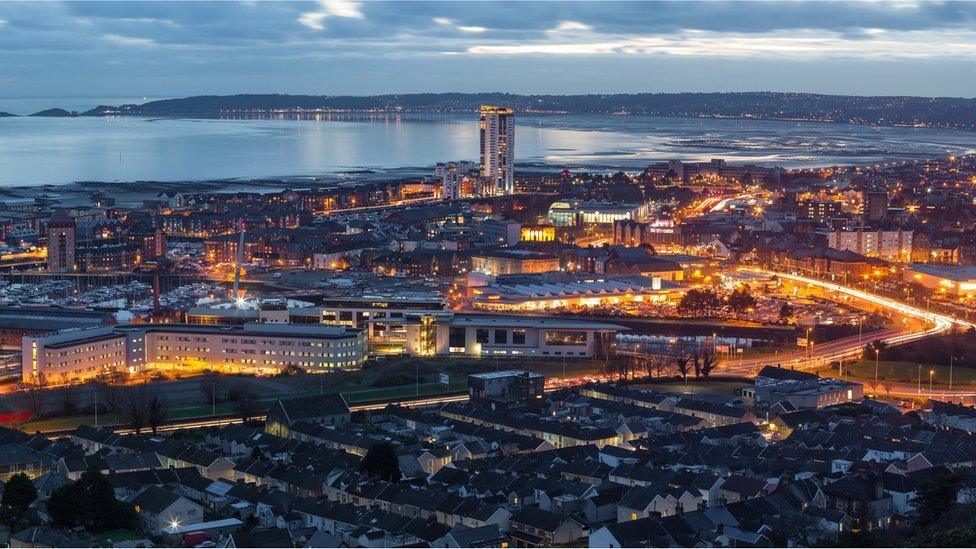Beginner's guide to culture in Swansea
- Published
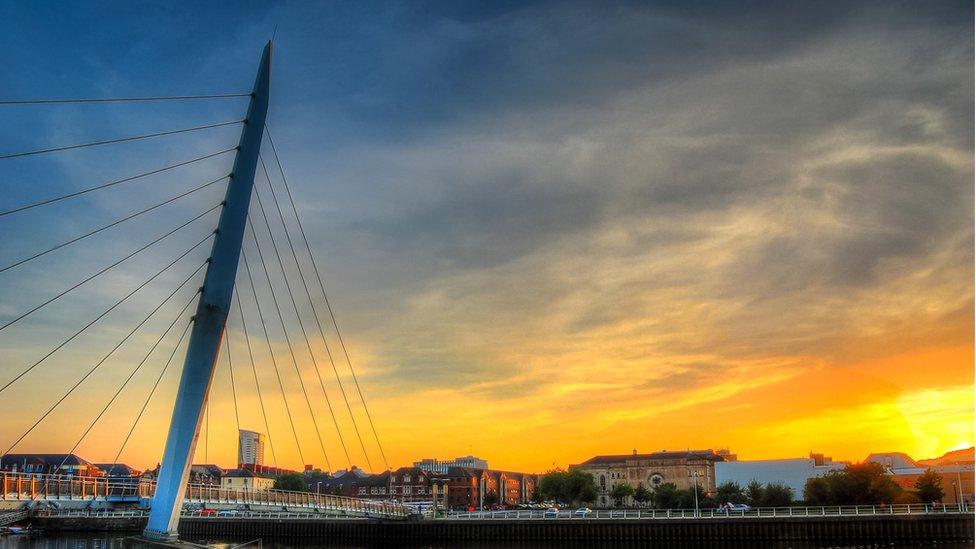
Swansea's Sail Bridge is a landmark in the city
Swansea has lost its bid for the title of UK City of Culture 2021. Poet Dylan Thomas once called his birthplace a "lovely, ugly town", while 1990s cult film Twin Town, which was set in Swansea, had a less favourable description of it. But what do you know about what the city has to offer?
Dylan Thomas is one of the most famous names to come out of Swansea and in 2014, a year of celebrations was held to mark the centenary of his birth. Visitors can still visit the poet's bedroom in Uplands where he first put pen to paper. Some of his best-known works include Do Not Go Gentle Into That Good Night and Under Milk Wood.
Thomas was also a member of the Kardomah Gang - a group of artists, musicians, poets and writers who frequented the cafe in the 1930s.
That business still exists today but at a different location after the original was destroyed by German bombers in the Three-Day Blitz during World War Two.
The Kardomah featured in Dr Who in 2009 thanks to Swansea-born writer Russell T Davies who brought the hit BBC show back to television screens, external four years earlier after 16 years in the abyss.
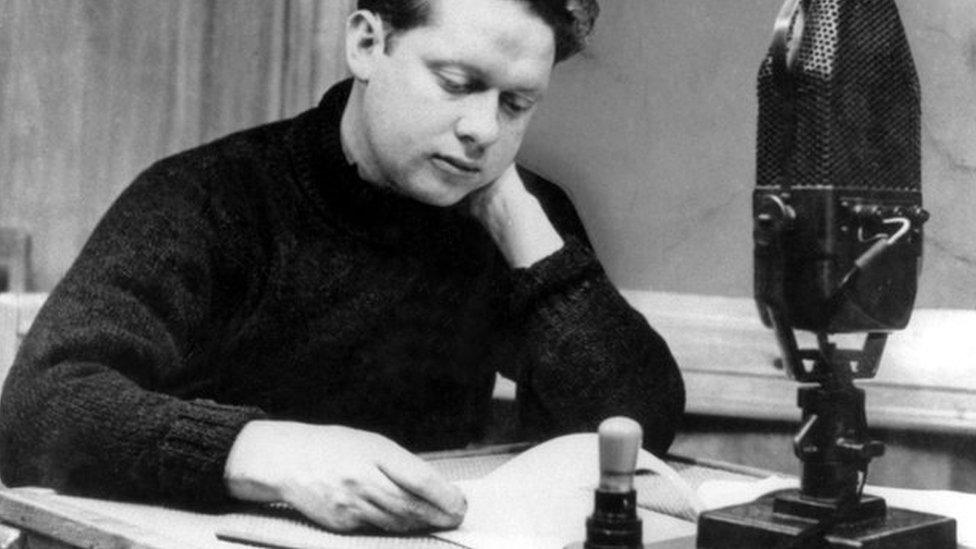
Events were held all over the world to celebrate International Dylan Thomas Day in 2014
Swansea's other famous face is Catherine Zeta-Jones who shot to fame in TV series The Darling Buds of May in the 1990s. Her popularity took her to Hollywood where she has appeared in films such as The Mask of Zorro, The Haunting, Traffic, Chicago and Ocean's 12.
Gavin and Stacey star Melanie Walters (Gwen), musician Mal Pope, who has written songs for Cliff Richard and the Hollies, and the late Goons star Sir Harry Secombe all hail from the city.
As well as famous sons and daughters, Swansea also has a dog called Jack. There is a memorial in the city for the black retriever who in the 1930s is believed to have saved more than 20 drowning people from the water in Swansea's docks.

Catherine Zeta-Jones shot to fame in the 1990s when she played Mariette Larkin
Swansea's future crop of talent could be lying in the city centre. The Hyst on High Street is a bar, TV and radio studio which aims to encourage artists, bands and soon-to-be internet sensations to the stage.
Across the road is community theatre Volcano and Elysium Studios, with three sites in the city centre, which between them provide space for almost 100 artists made up of painters, sculptors, conceptual artists, print-makers, illustrators and photographers.
Could one of them be the next Sir Frank Brangwyn? He was one of Britain's most prolific and versatile artists and some of the most important examples of his work are the huge British Empire panels in the city's Brangwyn Hall, a major concert hall and conference centre.

Welsh artist Charles Uzzell-Edwards, aka Pure Evil, painted this mural of Elizabeth Taylor on the Volcano Theatre
Work could also feature in the Glynn Vivian art gallery which was recently refurbished and extended and is a regional partner of the Tate. Productions could take place at the Taliesin, Grand Theatre or the planned 3,500-capacity digital arena.
Annual events in Swansea, which was granted city status in 1969 to mark Prince Charles' investiture as the Prince of Wales, include the Wales Airshow and BBC Proms in the Park, while Wales' biggest dance music event, Escape into the Park, ran until 2011.
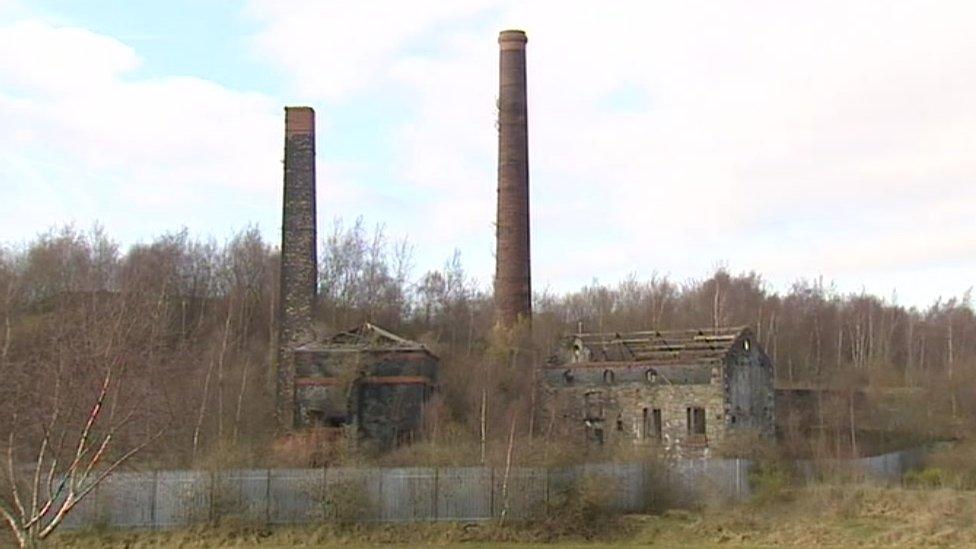
Hafod Copperworks closed in 1980 but was once a world leader
Swansea also boasts a rich heritage, most notably it was the home for the world's first passenger railway and had the world's largest copper works, neither of which are in existence any more.
The old Swansea and Mumbles Railway was originally formed so lime produced from Gower kilns and coal from the Clyne Valley could be transported to the wharfs. But in 1807, the method changed and passengers began to be transported instead by horse-drawn carriages which were later replaced by steam engines and then electric.
Its ownership was transferred to South Wales Transport Company in 1958 and the railway shut two years later as it was reported to be making a loss. One of the trams can still be seen at Swansea Museum's Tramshed which also houses other memorabilia from the railway.
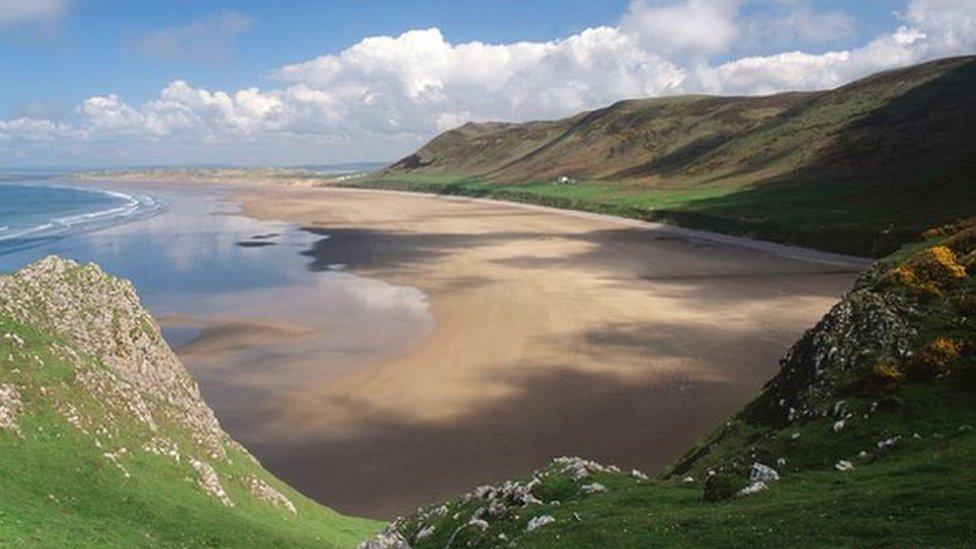
Rhossili Bay is a three-mile (4km) stretch of beach on the Gower peninsula
The Copperworks' history as a world-leader in the 19th Century is also being brought back to life. The ruins on the banks of the River Tawe are being used as part of a visitors' trail to learn about the site which shut in 1980, while there are plans for a museum as well as a visitor centre.
One of the most visited areas in and around Swansea is Gower - which in 1956 became the UK's first Area of Outstanding Natural Beauty. Its beaches include Three Cliffs, Oxwich and Rhossili and the peninsula also boasts a number of castles and forts.
But it is also home to the famous Penclawdd cockles which have been present on the Burry Estuary since Roman Times and are one of the key draws to Swansea Market in the city centre, Wales' largest indoor market.

Swansea City have enjoyed some highs during their seven years in the Premier League including winning the League Cup for the first time
And if cockles were not enough for seafood lovers, in 2013, oysters made a return to waters near Mumbles nearly 100 years after the end of commercial oyster fishing which was the bedrock of the coastal economy since the 17th and 18th centuries.
Sport plays a key role in Swansea's culture and the city's football club went from the old Fourth Division to the First Division in just four seasons under John Toshack in the late 1970s into the next decade, while in 2011, the Swans became the first Welsh club to grace the Premier League and have remained there ever since.
In other sporting firsts, Sir Garfield Sobers became the first cricketer to hit six sixes in an over when he played for Nottinghamshire against Glamorgan at St Helen's rugby and cricket ground in 1968.
And finally, while it might not be a sport, Swansea was also the first Welsh city to have its own version of board game Monopoly in 2005.
- Published21 October 2017
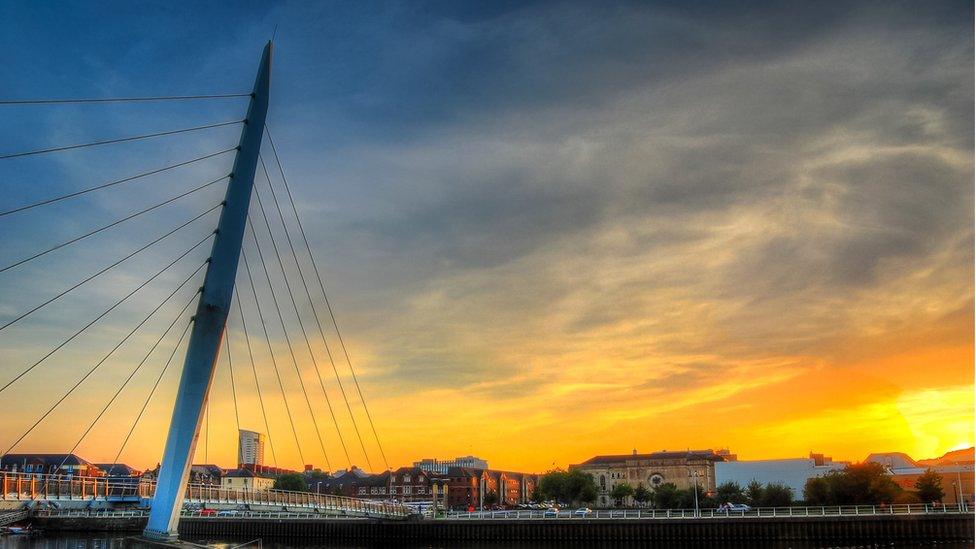
- Published28 September 2017
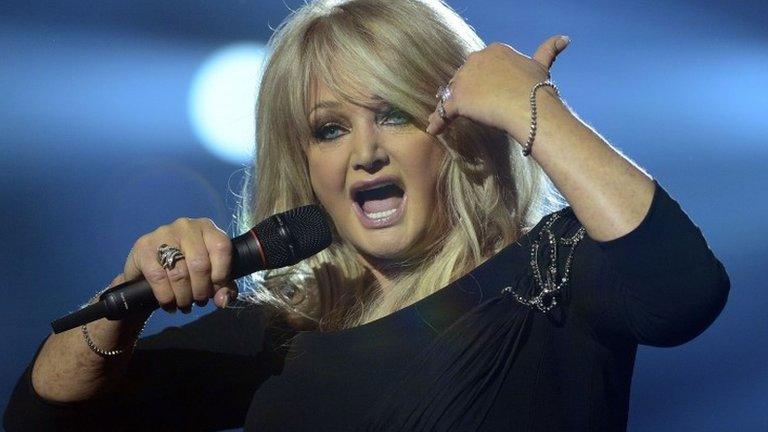
- Published15 July 2017
